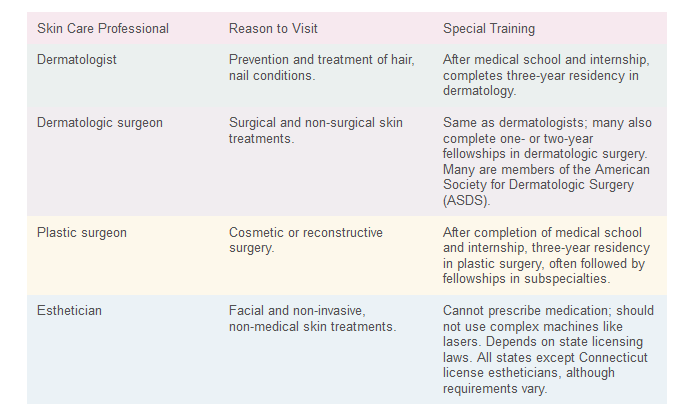The key to healthy skin lies beyond which soap you use. It depends on what you eat, whether you exercise, how much stress you’re under and even the kind of environment in which you live and work.
All of these things affect how fast your skin ages, and thus how it will look, by influencing certain processes that lead to oxidation and inflammation. Sounds complicated, but it really is not.
Basically, complex chemical processes in your body produce unstable molecules called free radicals. Think of them as Skin Enemy No. 1. Left to their own devices, they go on to damage otherwise healthy cells in a process called oxidation. This is the same process that turns an apple brown or changes a copper roof from reddish gold to blue-green, so you can just imagine the way it can affect your skin. Sun, smoking, air pollution and poor diet all speed production of these free radicals.
Luckily, your body also produces antioxidants, molecules whose job it is to sweep up those free radicals before they can do any serious harm. How you take care of yourself—including what you eat—can increase production of these valuable molecules, literally saving your skin.
Nutrition and your skin
Women have been using foods as facial treatments for centuries, making masks of egg whites and olive oil, putting cucumbers over their eyes to reduce swelling. But did you know that the food you put in your mouth can affect the health of your skin more than anything you could put on your face?
Although studies find certain individual foods can help you maintain healthy skin, your overall diet—as well as your weight—matters most. For instance, if you’re overweight and/or you eat a diet high in processed foods, including white bread, cookies, ice cream and packaged dinners, and low in fiber and fresh fruits and vegetables, you have a higher risk of developing a condition called insulin resistance, which can lead to diabetes.
In this condition, insulin, a hormone that “unlocks” the cell so glucose, or fuel, can get in, doesn’t work very well. Thus, all this glucose builds up in your bloodstream instead of disappearing into cells where it’s supposed to go. This, in turn, damages skin. How? By reacting with the protein fiber network (i.e., collagen and other proteins) that make skin resilient. This reaction creates harmful waste products called advanced glycosylation endproducts, or AGEs, those free radicals mentioned earlier. Fibers stiffen, skin loses it elasticity and you become more vulnerable to wrinkling, sagging and damage from ultraviolet (UV) light.
But eat a varied and nutritious diet, and it’s amazing what can happen to your skin. In one study, researchers from Monash University in Australia found people who ate the most fruits, vegetables and fish had the least amount of wrinkles. However, the researchers found, diets high in saturated fat, including meat, butter and full-fat dairy, as well as soft drinks, cakes, pastries and potatoes (called “high-glycemic” foods), increased the likelihood of skin wrinkling. Coincidentally, these high-glycemic foods are also implicated in insulin resistance.
So, if you want to follow a skin-healthy diet, make sure you pack your diet full of these nutrients:
Vitamins E and C. Studies find these vitamins can help protect your skin from the harmful effects of the sun, particularly in supplement form. Meanwhile, vitamin C is a valuable nutrient in collagen synthesis, the protein that helps hold skin together and give it tone. If you do supplement, don’t exceed 400 IU of vitamin E because it could increase the risk of bleeding. Best food sources: vegetable oils, margarine, eggs, fish, whole-grain cereals and dried beans for vitamin E; citrus fruits, berries, potatoes, tomatoes, sweet and hot peppers and leafy green vegetables for vitamin C.
Essential fatty acids. Several studies find that the amount of poly- and monounsaturated fats, particularly omega-3 fatty acids, in your diet can minimize sun and aging damage to your skin. Best food sources: cold-water fish, such as salmon, mackerel and tuna. For healthy mono fats, stick with olive oil and nuts.
Tea. Tea, particularly green tea, is an excellent source of antioxidants called polyphenols. That may be why one Arizona study found that the more hot tea people drank (particularly tea with lemon) the less likely they were to develop squamous cell skin cancer.
Vitamin A. Another powerful antioxidant, vitamin A forms the basis for a slew of pharmaceutical and over-the-counter skin products that contain retinoids. One study found a strong connection between vitamin A levels in the blood (an indicator of the amount in the diet) and skin dryness; the more vitamin A, the moister the skin. You shouldn’t supplement with vitamin A, and it’s hard to get enough via food, but it’s easy to get vitamin A’s precursor—beta-carotene—which is converted to vitamin A in your intestine. Best food sources: orange, red and yellow fruits; vegetables such as carrots, sweet potatoes, tomatoes and cantaloupe; and green leafy vegetables such as spinach and broccoli.
Exercise and your skin
You know the glow your skin takes on after a brisk walk outside or a tough aerobics class? Generally, that’s related to perspiration, which is one way your body gets rid of toxins.
But exercise does much more than flush impurities out of your skin. It also promotes production of sebum, or oil, your skin’s natural moisturizer, and enhances blood flow to the skin. That’s important because blood carries oxygen and valuable nutrients that help maintain skin health.
Plus, regular physical activity helps you maintain a healthy weight and keep insulin resistance at bay. Exercise is also an important way to manage stress. If you’re exercising outdoors, though, remember to protect your face and body from UVA and UVB rays by wearing a moisturizer with sunscreen protection. You don’t want to “undo” all the good of that workout.
The environment and your skin
If you’ve ever had to slather on the moisturizer after a cross-country airplane flight or suffered a breakout while visiting a large urban city, then you know firsthand the way the environment can affect your skin.
It’s never too late to quit smoking. Quit today, and your skin will show the health benefits tomorrow. Air pollution, the dry, recirculated air of an airplane, smoking and, of course, the sun are all enemies of skin health. They increase the production of free radicals, strip antioxidants from your skin and intensify the effects of aging. Smoking, for instance, constricts blood vessels, reducing blood flow to the skin. It also depletes levels of valuable antioxidant vitamins like vitamin A, increasing damage to the elastin, the elastic fibers in your skin that provide a healthy tone. Just the smoke curling up from the cigarette can damage skin as much as any other pollutant. In fact, studies find that people who smoke have significantly more wrinkles at an earlier age than those who don’t. Of course, the greatest damage to your skin occurs from the ultraviolet rays of the sun. Over time, the sun, like smoking, damages elastin and collagen, leading to the formation of fine lines and wrinkles. Most of the damage occurs in your childhood years—it just doesn’t show up until middle age.
And it’s not just soaking up the rays on the beach that does the damage. Simply sitting near a window, driving your car and walking outside also expose you to the harmful rays of the sun, and these are all activities in which you’re much less likely to wear sunscreen. No wonder, then, that skin cancer is the most common cancer in the United States, with more than one million skin cancers diagnosed each year. Overall, one in six Americans will develop skin cancer at some point in their lives. The reality is that there is no such thing as a healthy tan—unless it’s one that comes out of a bottle.
Five suncreen facts
The higher the SPF (sun protection factor) the better. That’s not only because of the increased protection higher SPF sunscreens provide, but because most people don’t use nearly enough to begin with. However, the SPF only indicates protection provided against UVB rays—not the invisible, ultraviolet-A rays that can also affect skin health and hasten the aging process. That’s why you need a broad-spectrum sunscreen.
The more the better. You need to apply at least a shot glass’s worth of sunscreen every couple of hours you’re in the sun. In fact, you should reapply your sunscreen every two to four hours. That means a six-ounce bottle of sunscreen should last just a couple of visits to the beach—not all summer.
UVB protection isn’t enough. Early versions of sunscreen only protected against UVB rays, but both UVB and UVA rays contribute to skin cancer. To find a sunscreen that protects against both, look for Parsol 1789, also called avobenzone, zinc oxide or titanium dioxide on the ingredients list. Stay posted for what dermatologists are calling the superpower of sunscreen protection—a chemical called mexoryl, which has an SPF of 60 and provides much greater protection against UVA rays than anything else on the market. Available in Europe and Australia, it is under consideration for approval by the U.S. Food and Drug Administration (FDA).
SPF has nothing to do with how long you can stay in the sun. Studies find that people think the higher the SPF rating, the longer they can stay out in the sun. That’s simply not true. While higher numbered products (SPF-40, for example) do provide more protection, using sunscreen doesn’t prevent all the possible harmful effects of the sun. Plus, few people use sunscreen the right way—a full ounce every couple of hours; more if you’ve been swimming or sweating.
You need more than sunscreen to protect your skin from the sun. You also need a hat, protective clothing and a time limit for your stay in the sun.
Stress and your skin
Whether you’re stressed about your job, a family member’s health, a crumbling marriage or your first child going off to college, stress has a sneaky way of showing up on your face and skin. Think of it as your body’s way of communicating what’s going on inside to the outside world. There’s even a name for it: psychodermatology.
The stress in your life turns up on your face. For instance, studies find that stress triggers 62 percent of psoriasis episodes (an inflammatory skin condition), with flares occurring within days of the emotional upset. Most hyperhidrosis episodes (in which you sweat excessively) are related to stress, and 94 percent of episodes in women with rosacea—a skin condition marked by excessive redness and bumps on the face—have an emotional trigger. Thus, you can see the very strong mind/body connection that exists between our emotions and our skin health. The connection is probably related to the immune system and the way it reacts to stress. Short bursts of stress—like those from a good workout—can improve your skin. But, when you’re exposed to chronic stress—stress that just won’t stop—or a lot of stress all at once, your immune system can get overloaded. The result? Negative effects on your skin. So it’s important you learn to recognize the stressors in your life and modify your reactions to them. Relaxation techniques, biofeedback and breathing training can help you cope better with life stresses and reduce their effects on your skin.
A 2001 survey by the American Society for Dermatologic Surgery (ASDS) found that about 45 percent of dermatologic surgeons reported an increase in the number of patients they saw who needed corrective treatment for burns, splotching, irreversible pigmentation and scarring resulting from various medical procedures performed by aestheticians, cosmetic technicians and employees of physicians without appropriate physician supervision.
Make sure you’re seeing the right skin-care professional for the right reason. And always look for physicians who are board-certified in their specialty. This means they’ve passed an intense examination and take continuing education courses to maintain their knowledge and skills.
Finding the right skin care professional


